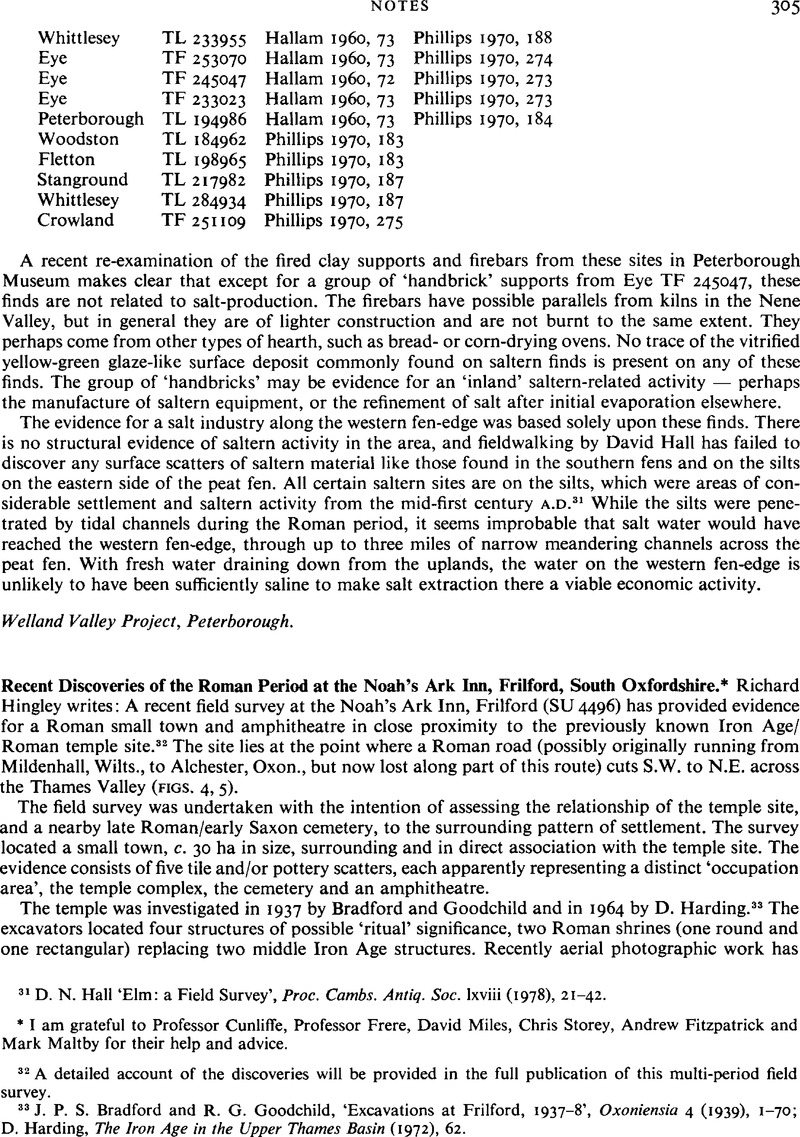Article contents
Recent Discoveries of the Roman Period at the Noah's Ark Inn, Frilford, South Oxfordshire*
Published online by Cambridge University Press: 09 November 2011
Abstract

- Type
- Notes
- Information
- Copyright
- Copyright © Richard Hingley 1982. Exclusive Licence to Publish: The Society for the Promotion of Roman Studies
References
32 A detailed account of the discoveries will be provided in the full publication of this multi-period field survey.
33 Bradford, J. P. S. and Goodchild, R. G., ‘Excavations at Frilford, 1937–8’, Oxoniensia 4 (1939), 1–70Google Scholar; D. Harding, The Iron Age in the Upper Thames Basin (1972), 62.
34 M. Gelling, The Place-Names of Berkshire. Part III (1976), 911.
35 At Gosbecks, Essex, a theatre was associated with a temple and extensive Iron Age/Roman settlement evidence: M. R. Hull, Roman Colchester (Reports Res. Comm. Soc. Antiq. London No. XX, 1958), 258 n.; P. Crummy, ‘The Temples of Roman Colchester’ in W. Rodwell (ed.), Temples, Churches and Religion in Roman Britain (BAR 27 (i), 1980), 243-83. A theatre in association with a temple is known at Catterick: J. Wacher, Roman Britain (1978), 254. At the Roman major town of Verulamium, Herts., a theatre was associated with a temple complex: K. Kenyon, ‘The Roman Theatre at Verulamium, St Albans’, Archaeologia 84 (1934), 213-61.
36 J. P. Bushe-Fox, Fourth Report on the Excavation of the Roman Fort at Richborough, Kent (Reports Res. Comm., Antiq. London No. XVI, 1949), pl. xlvii.
37 e.g. B. G. Hoffman, The Structure of Traditional Moroccan Society (1962), 82 for a specific example, and Polanyi, K., ‘Markets and Money in the European Middle Ages’, Norwegian Arch. Review 11 (1978), 92–6CrossRefGoogle Scholar, p. 94, for general discussion.
- 4
- Cited by


